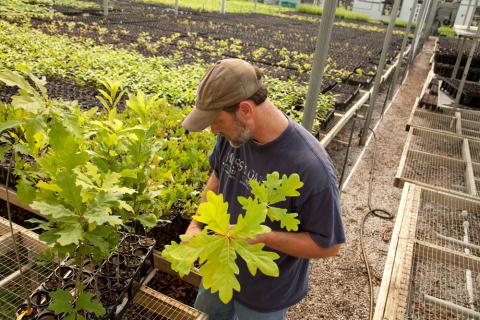Allen “Horntagger” Morris | Originally published in GameKeepers: Farming for Wildlife Magazine. To subscribe, click here.
The Inaugural Prospectus
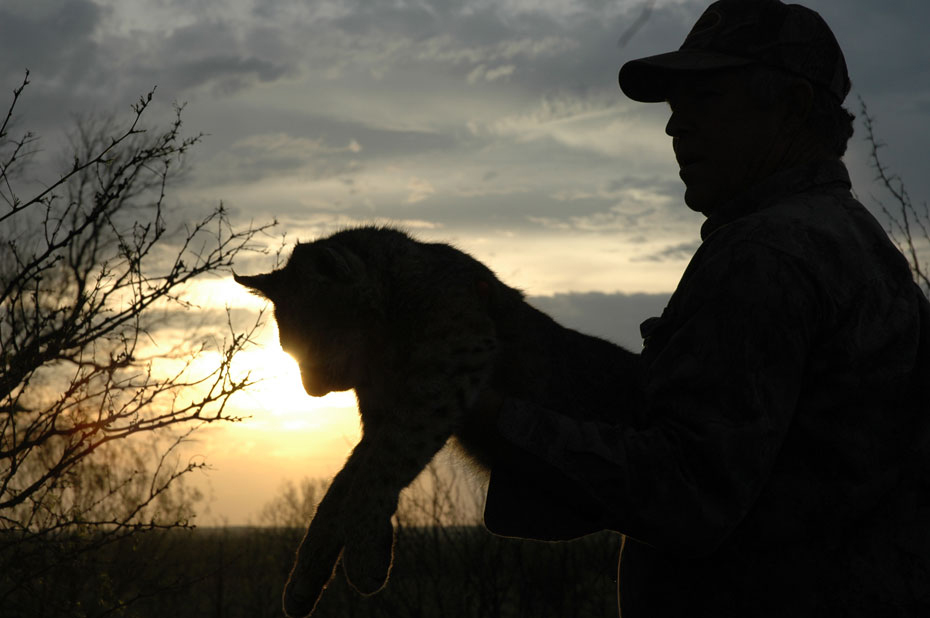
Graduates of the Quality Deer Management Association’s Deer Steward I, II and III curriculum from across the country voiced their opinions as to what was the most important training needed for deer hunters, land managers and land owners overall. QDMA leadership responded. In September, 2015 the first ever “Deer Steward Module” and new “Predator Management Module” took place at the Ames Plantation in Grand Junction, Tennessee as part of the “Deer Steward Certification Program. This intensive three day course was led by professional trapper Clint Cary, owner of Tactical Trapping Services and author of the book Predator Population Management, and Matt Ross, QDMA Certification Programs Manager for the Quality Deer Management Association. I was one of 17 individuals from across the country who attended.
We learned all aspects of a predator control campaign, including pre-planning, making successful sets, laying out a property for a campaign, trap modifications, lures, baits and other attractants and much more. The instruction was a mix of in-class and in-the-field individual and group participation. With over 30 years of experience in the outdoors and over 20 years of implementing habitat management for the benefit of wildlife, I have learned one thing; there is always more to learn!
Predator management has become just one more apparatus in my tool box. Predator management has come to the forefront for me in Missouri. I have enhanced my habitat and in turn, I have improved conditions for the game animals across the board. However, in doing so, I have also increased the predator population. The true circle of life, but just like deer have to be managed, your prey population also needs to be controlled. Participants requested the predator management class be the first class, which shows how important “predator management” has become a key tool to those who practice sound Quality Deer Management principles.
Coyotes are now known to inhabit all 48 states in the contiguous United States, which could not be said just 20 years ago. Because of the coyote’s expanding range and exploding population, it has now become a hot topic of discussion among conservationists and media. You can see the topic of “coyotes” on TV, in magazines, and on the internet. New predator research is “devoured” by the deer hunting community and seminars across the country have become commonplace.
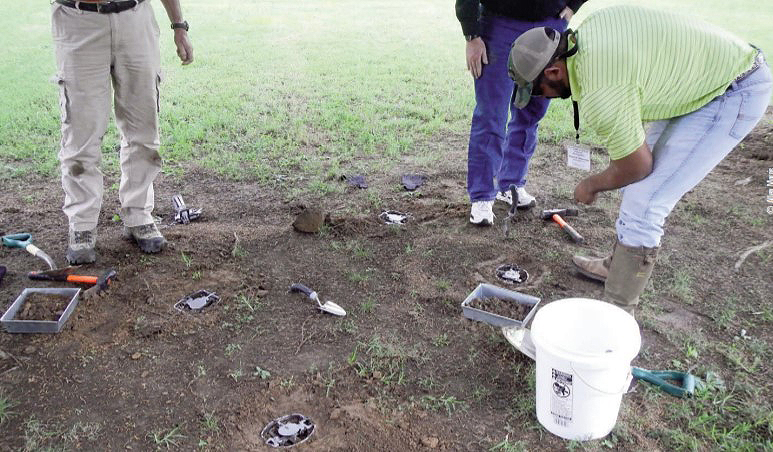
Coyote Research
Deer harvest numbers have dropped across multiple states in recent years due to diseases, winters, herd reductions, habitat loss and falling fawn recruitment…due in large part to coyotes. During this class we received results from some of the latest coyote research. In the eastern part of the United States a study of coyote movement had been recorded, which included some extremely long movements… some as far as 100 miles, which could be considered “transient coyotes."
Coyotes’ home ranges can vary greatly in general terms. According to the research we received, a bit over five square miles is average for the local coyote population, with some up to ten square miles. Density varied; as seasonal changes occurred so did the coyote’s range. The highlight of the class for me was a glimpse into the secret life of the coyote. We watched some of the best videos I have ever seen on a coyote’s reaction to different trap sets, lures, baits and visuals.
Clint Cary showed the importance of keeping a coyote on location. Having bait in multiple locations on either side of the trap kept the coyote moving from one side to another. By having additional bait, free for the taking, it induced a kind of “feeding frenzy which kept the coyote on site for longer periods. More time means more foot movement which dramatically increases your odds of a catch. Coyote research has been going on for years, but has now reached a fever pitch as the coyotes’ territory has expanded further into the East and Southeast. Coyotes are the “top dog” when it comes to the cause of fawn morality. The information shared in class showed mortality for fawns as high as 62 percent in one state, with the average at 27 percent across the country.
Coyotes are not the only predator of fawns. Fawns are a significant part of a bobcat’s diet. During the summer months a bobcat will even take on adult whitetails. Black bears, wolves, mountain lions, even alligators all have deer on their menus. Depending upon where you are located in the country this should be taken into consideration when making a plan for doe harvest. As a land manager, you have to know your area if you are to make any long term plans. Coyotes are not the primary predator on my place in Missouri.
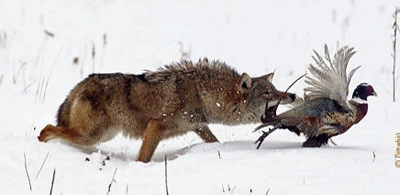
adult deer to upland birds or the nests they sit on.
I have a forest habitat with some very heavy cover. Because of that I have a large population of bobcats. In the predator management class, we learned that when coyotes are absent, bobcats can take greater than 60% of the fawns. Trapping on my property for bobcats and coyotes in the last five seasons has produced 16 bobcats and 8 coyotes. In turn, my fawn recruitment has gone from four to eleven in the same time frame, and my turkey poults have increased 80%.
Lessons Learned Increase your Odds
One thing stressed several times during the class by Clint Cary was – “The best method is always the one that catches a coyote.” Trap modifications and placement, lures, baits and other helpful strategies we learned during class may vary depending on your part of the country or type of habitat. “Trap modifications” was another point stressed by Clint. You can increase your odds by using “Paws-I-Trip II pan tension kits.” They are a revolutionary advance in trap firing systems and use a simple leverage and mechanical advantage, maintaining a constant, even tension on the trap pan every time the trap is set. These tension kits attach easily to conventional traps to provide automatic tension, an audible set point, minimal pan creep and no pan wobble. They are simple to install and require no special tools or welding. They reduce misfires and result in a better hold on larger animals like coyotes.
Getting certified in cable restraints last year in Missouri gave me one more tool during this past trapping season. If you have taller food plots in the winter, this can be a great tool because you can funnel your target predator right into the cable/snare loop. It’s also great for when the weather starts freezing leghold style traps, cable restraints can continue to work. This class taught me to make your cable restraint disappear by tying weeds or grass to the cable outside the loop, or to the support wires for the cable. You have to know your habitat and wildlife as a land manager and you have to know the terrain as a trapper.
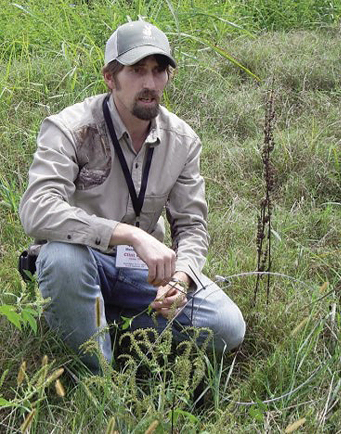
“snare” set-up in the grass in front of instructor,
Clint Cary. Tying weeds or grass to the cable
restraint outside the loop or to the support wires
will help to keep your set-up hidden. A cable-
restraint is similar to a snare, but it holds the animal
without killing it, often referred to as a “non-lethal
snare.”
If your target is coyotes, learn how to do a general field area check for high spots and protrusions into a field for trap set locations. High spots can be a favorite for coyotes so they can check over the field for prey, and a protrusion can be a great location for prey to hide from a coyote and can make it easier to funnel a coyote off the edge of it. Trapping along roads is another good scheme because in some areas coyotes will run roads as much as 70 percent of time.
When setting roads or trails you must keep in mind the wind - you might have to set traps on both sides of the trail so that it catches the coyote’s nose as they pass or the wind changes. You have to slow the coyote down and get them to stop to investigate. Closer to the edge of the road will catch a cautious coyote, but you don’t want the trap in the tire channel where someone may drive over it. Felidae or Canidae? What is the difference between setting traps for coyotes and bobcats? Clint Cary explained you can use the same type of trap, but the location changes for a bobcat. They will hug field edges and walk into a more enclosed environment, where coyotes will cut across an edge or travel right through the middle.
Best Lures
If you think there are a lot of deer lures on the market, you haven’t seen anything yet. There are more trapping lure companies, more pages of lures, more options for lures and more opinions on those lures than you can go through in a lifetime. To save my fellow gamekeepers a little time, I questioned the instructors and some of my associate trapper/students, as to what their favorite lures were and since then, I have tried 23 different selections. Following is a list of the ones that I seem to go back to time after time. I lean towards a dual purpose lure because my target animals are bobcats and coyotes.
- Caven's Gusto: I have used this lure for coyotes, bobcats and fox. It hangs in there a long time. Use Gusto above your Farming for Wildlife 91 set during warm weather and directly at your set when it starts to cool down
- Fox Hollow GH-II: I have used this lure for four seasons for coyotes and bobcats. It stands up to rain and other adverse weather conditions better than most. Fox Hollow's best-selling lure is their late fall and winter coyote and bobcat lure.
- Locklear's Primal Paste Bait: I tried this bait or the first time this year and really like the smell and constancy. It performed well.
- Locklear’s Gator Bait: I caught three of my bobcats using this bait this year.
- Powder - sodium benzoate: making your own bait from fish or deer scraps is a great way to save you money and increase your catch. Using sodium benzoate will help preserve bait when you are using your own mixes.
Veteran Trapper Tips

spots around the trap will boost predator foot
movement and increase your odds. Here the author
poses in front of a dirt-hole set.
Use a PVC “T” to hold lure. By placing the lure inside the PVC tube it keeps it weatherproof longer. Skulls or bones are also great for holding lure and keeping it out of the weather. It makes a great visual “stopper” too. This is one of my favorite tactics.
One of the most important tips given by Clint Cary is that using bait may catch other furbearers, which can be a pain if they’re not your target, but using bait will also catch more coyotes! Preference is always to use bait which will keep coyotes at a set longer and create more foot movement. Follow up the bait with a lure and you’ll increase your odds. That is the truth!
Because I’m in a forested environment I catch and have to clean a lot of opossum before I can start catching my main target animals. I look at the positive of this, because opossums are also egg-eaters it helps my turkey poult recruitment. Just remember when using bait to scatter it around a little to increase foot movement and to keep the coyote on location longer. Clint Cary suggested using dirt holes on two to three sides of a trap and putting bait in each of them to increase foot movement. Both glycerin and propylene glycol are identical when used as an odorless anti-freeze in lures and urines. The glycerin is very thick and sticky like honey or molasses and gets real stiff in extremely cold weather. It gives a lure good stickiness and body, but perhaps in real cold climates it would be too much.
Propylene glycol is thinner, more like syrup and might be better to mix with a cold weather lure. To take this further I talked with a lure company that Clint Cary suggested about this subject. Glycerin will thicken up in lures, but it’s not too much of a problem even in very cold climates. 95% of people use propylene glycol as an anti-freeze on the set. They suggest a mixture of 75/25 urine and glycerin.















